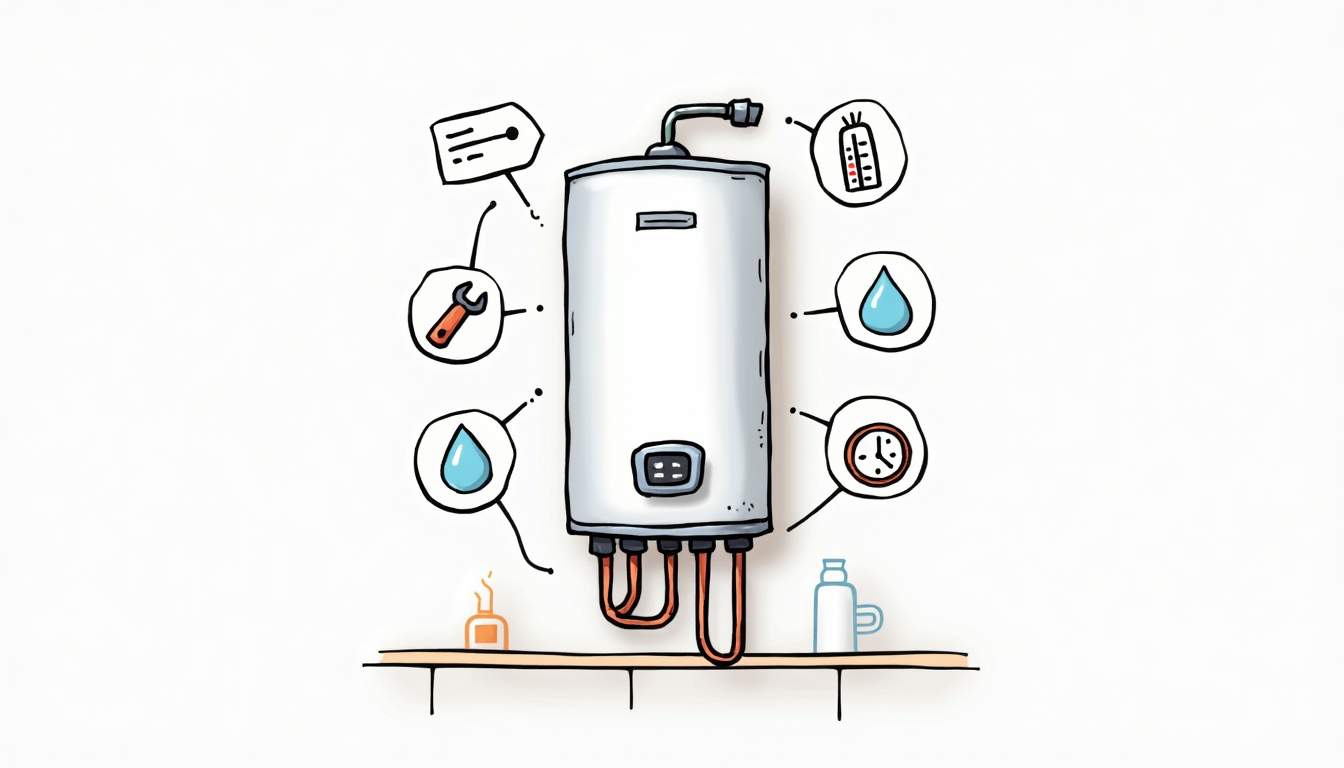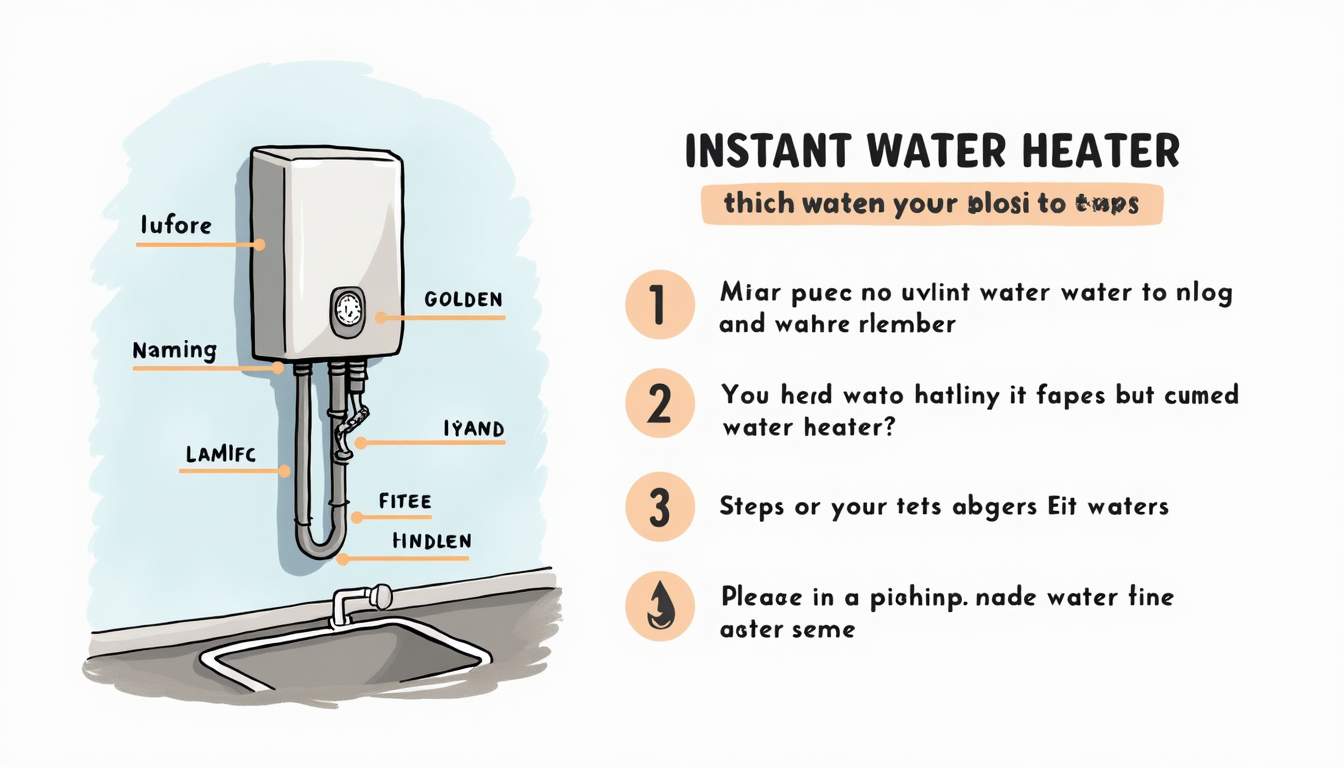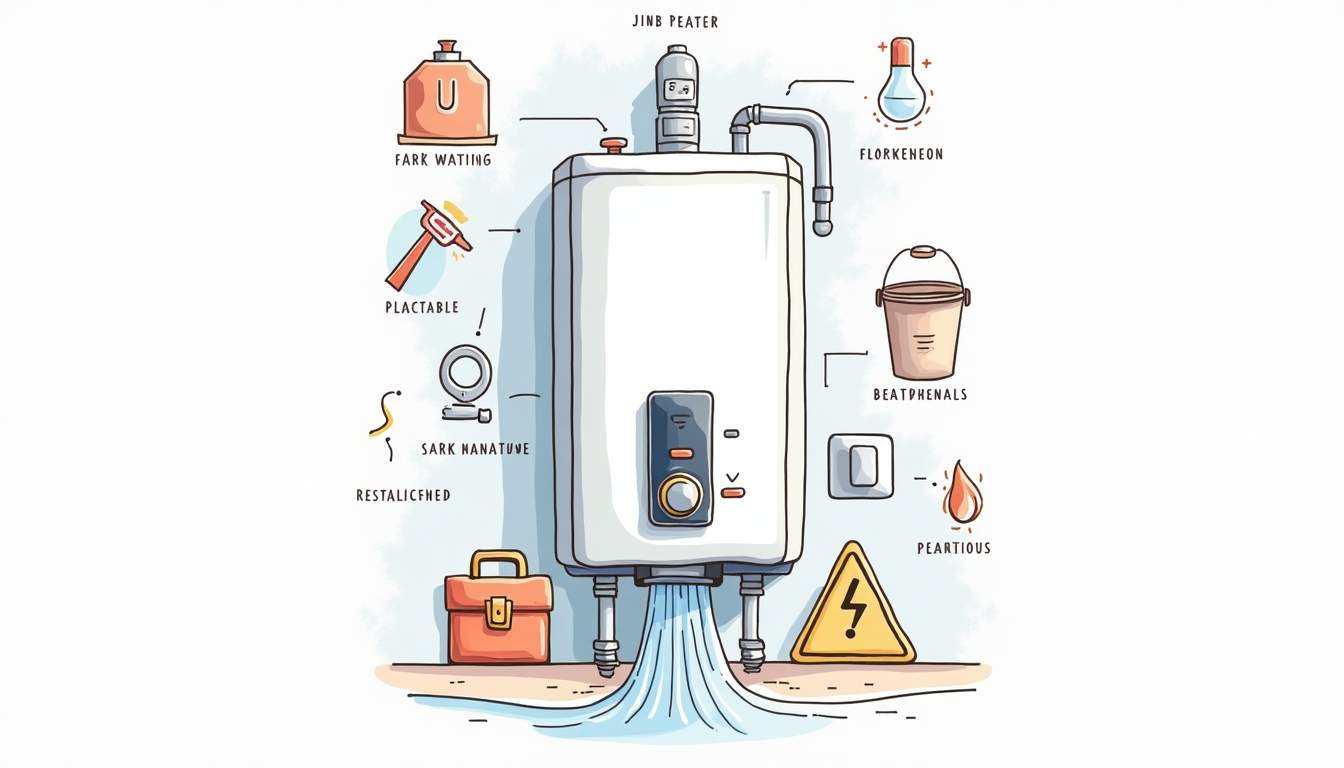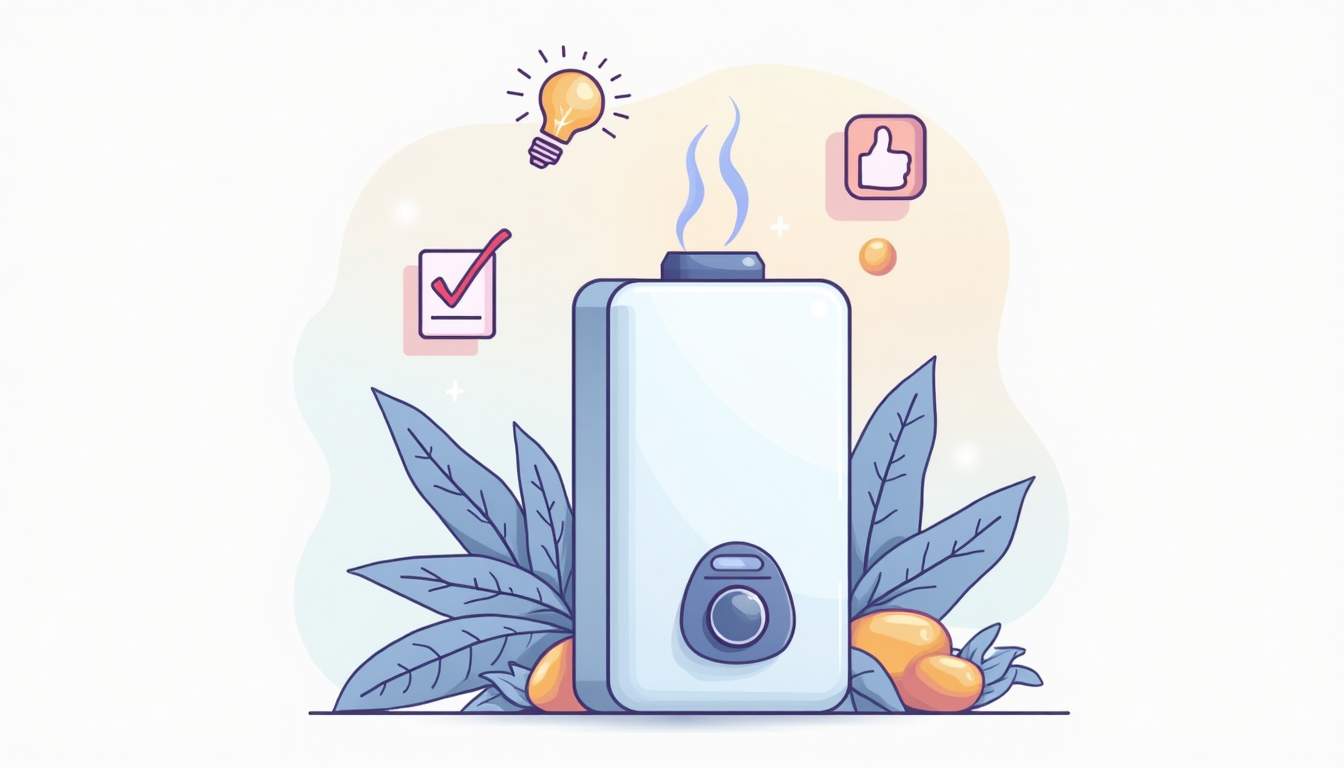
Instant water heaters have become a popular choice for many households due to their efficiency and ability to provide hot water on demand. Unlike traditional storage water heaters, these units heat water directly as it flows through the device, eliminating the need for a storage tank. While they offer numerous advantages, instant water heaters can sometimes encounter issues that disrupt their performance. Understanding common problems and how to troubleshoot them can save time, money, and the inconvenience of cold showers.
Understanding How Instant Water Heaters Work
Before diving into troubleshooting, it’s helpful to understand the basic operation of an instant water heater. These units use electric heating elements or gas burners to heat water instantly as it passes through the system. When a tap is turned on, cold water enters the heater, and sensors activate the heating mechanism to raise the water temperature to the desired level.
Because there is no tank storing hot water, the heater must work efficiently and respond quickly. This instant heating process relies on several components working in harmony, including thermostats, flow sensors, heating elements, and safety devices. Any malfunction in these parts can cause the heater to underperform or stop working altogether.
Instant water heaters are designed with energy efficiency in mind, making them an attractive option for homeowners looking to reduce energy costs. Unlike traditional water heaters that continuously heat and store water, instant models only activate when hot water is needed, leading to significant energy savings. This on-demand heating not only conserves energy but also provides a continuous supply of hot water, making them ideal for households with high hot water demands, such as during busy mornings when multiple showers are in use.
Moreover, the compact size of instant water heaters allows for flexible installation options, whether under the sink, in a cabinet, or mounted on a wall. This versatility can be particularly advantageous in smaller homes or apartments where space is at a premium. Additionally, many modern instant water heaters come equipped with advanced technology, such as digital displays and Wi-Fi connectivity, enabling users to monitor and adjust settings remotely. This level of control enhances convenience and ensures that the water temperature is always just right, catering to the specific needs of each household member. For professional installation or guidance, you can visit Plumber Singapore website to ensure reliable and efficient service.
Common Issues and How to Troubleshoot Them
No Hot Water or Insufficient Hot Water
One of the most frequent complaints with instant water heaters is the lack of hot water or water that isn’t hot enough. Several factors can cause this problem:
- Power Supply Issues: For electric models, ensure the unit is receiving power. Check circuit breakers and fuses to confirm they haven’t tripped or blown. Sometimes a loose connection or faulty wiring can interrupt power to the heater.
- Flow Rate Too Low: Instant water heaters require a minimum flow rate to activate the heating element. If the water flow is too slow, the heater may not turn on. Try opening the tap wider or checking for clogged aerators and filters.
- Thermostat Settings: The thermostat might be set too low, resulting in lukewarm water. Adjust the temperature control to a higher setting and test the water temperature again.
- Heating Element Failure: Over time, heating elements can burn out or become coated with mineral deposits, reducing efficiency. If the water remains cold despite power and flow being adequate, the element may need replacement.
Additionally, it’s worth noting that the age of the water heater can also play a significant role in its performance. Older models may not heat water as efficiently as newer ones, which often come equipped with advanced technologies for better energy efficiency and faster heating times. Regular maintenance, such as flushing the tank to remove sediment buildup, can also help prolong the life of the heater and ensure optimal performance.
Water Temperature Fluctuates
Another common issue is inconsistent water temperature, where the water alternates between hot and cold. This can be frustrating and is often caused by:
- Flow Sensor Malfunction: The flow sensor detects water movement and signals the heater to activate. If it’s faulty or dirty, the heater may cycle on and off unpredictably.
- Thermostat Problems: A defective thermostat can cause the heating element to turn off prematurely or fail to maintain a steady temperature.
- Water Pressure Variations: Fluctuations in water pressure within the home’s plumbing can affect the heater’s operation. Installing a pressure regulator may help stabilize the flow.
Moreover, the installation location of the water heater can impact its performance. If the heater is situated far from the point of use, it may take longer for hot water to reach the tap, leading to perceived temperature fluctuations. Insulating the hot water pipes can help maintain the temperature as the water travels through the plumbing system, reducing the wait time and improving overall comfort.
Water Heater Shuts Off Suddenly
Sudden shutdowns during operation can be alarming and often indicate safety mechanisms at work. Instant water heaters are designed with built-in protections to prevent overheating or electrical hazards. Common causes include:
- Overheating Protection Triggered: If the water temperature exceeds safe limits, the heater will shut off to prevent damage. This could be caused by a malfunctioning thermostat or blocked water flow.
- Electrical Safety Switches: Ground fault circuit interrupters (GFCI) or other safety switches may trip if there is a short circuit or electrical fault.
- Mineral Buildup: Hard water can cause scale to accumulate inside the heater, restricting water flow and causing overheating.
In these cases, it’s important to inspect the unit for blockages, test electrical components, and consider descaling the system if mineral deposits are suspected. Regularly checking the condition of the water heater and its components can prevent unexpected shutdowns. Additionally, keeping an eye on the water quality entering the heater can help mitigate issues related to mineral buildup, as using a water softener may significantly reduce the frequency of maintenance required for optimal operation.
Step-by-Step Troubleshooting Guide
When faced with an instant water heater issue, following a systematic troubleshooting process can help identify and resolve the problem efficiently.

1. Check the Power Supply
Begin by verifying that the heater is receiving power. Confirm that the unit is properly plugged in or wired, and inspect the circuit breaker or fuse box for any tripped breakers or blown fuses. Reset or replace as necessary. If the power supply is stable but the heater still doesn’t work, proceed to the next step.
2. Inspect Water Flow
Ensure that water is flowing adequately through the heater. Remove any faucet aerators or filters and clean them to remove debris. Open the tap fully to increase flow rate. If water pressure is low, check other fixtures in the home or consult a plumber to address plumbing issues.
3. Adjust Temperature Settings
Locate the thermostat control on your heater and increase the temperature setting. Wait a few minutes and test the water temperature to see if it improves. If the temperature remains low, the thermostat may be faulty or the heating element may be compromised.
4. Examine Heating Elements and Sensors
Turn off the power supply before inspecting internal components. Look for signs of damage or corrosion on the heating elements. If accessible, clean or replace them as needed. Also, check the flow sensor and thermostat for proper operation. These parts may require professional testing or replacement.
5. Look for Error Codes or Indicator Lights
Many modern instant water heaters feature digital displays or indicator lights that signal specific problems. Consult the user manual to interpret any error codes and follow recommended troubleshooting steps.
Preventive Maintenance Tips
Regular maintenance can significantly reduce the likelihood of problems and extend the lifespan of an instant water heater. Consider the following tips:
Flush the System Periodically
Mineral buildup from hard water can impair heating efficiency and cause overheating. Flushing the system every 6 to 12 months helps remove scale and debris. Use a descaling solution recommended by the manufacturer and follow safety instructions carefully.
Clean or Replace Filters and Aerators
Clogged filters and aerators reduce water flow and can trigger heater malfunctions. Clean these components regularly and replace them if damaged.
Inspect Electrical Connections
Loose or corroded wiring can cause intermittent power issues. Periodically check electrical connections for signs of wear and tighten or replace as needed.
Monitor Water Pressure
Maintain a consistent water pressure within the recommended range for your heater. Installing a pressure regulator can help protect the unit from damage caused by pressure spikes.
When to Call a Professional
While many instant water heater issues can be resolved with basic troubleshooting, some problems require professional expertise. It’s advisable to contact a licensed plumber or electrician if:

- The heater shows persistent error codes that cannot be cleared.
- There is a suspected electrical fault or wiring issue.
- Heating elements or sensors need replacement but you’re unsure how to proceed safely.
- The unit frequently shuts off due to overheating despite maintenance efforts.
- You notice leaks or water damage around the heater.
Professional technicians have the tools and knowledge to diagnose complex problems and ensure repairs are done safely and effectively.
Conclusion
Instant water heaters offer the convenience of hot water on demand, but like any appliance, they can encounter issues over time. Understanding common problems such as no hot water, fluctuating temperatures, and sudden shutdowns can help homeowners troubleshoot effectively. Regular maintenance, including flushing the system and inspecting components, plays a vital role in preventing malfunctions.

When problems arise that are beyond simple fixes, seeking professional assistance ensures the safety and longevity of your water heater. By staying informed and proactive, it’s possible to enjoy reliable hot water and avoid the inconvenience of unexpected breakdowns.